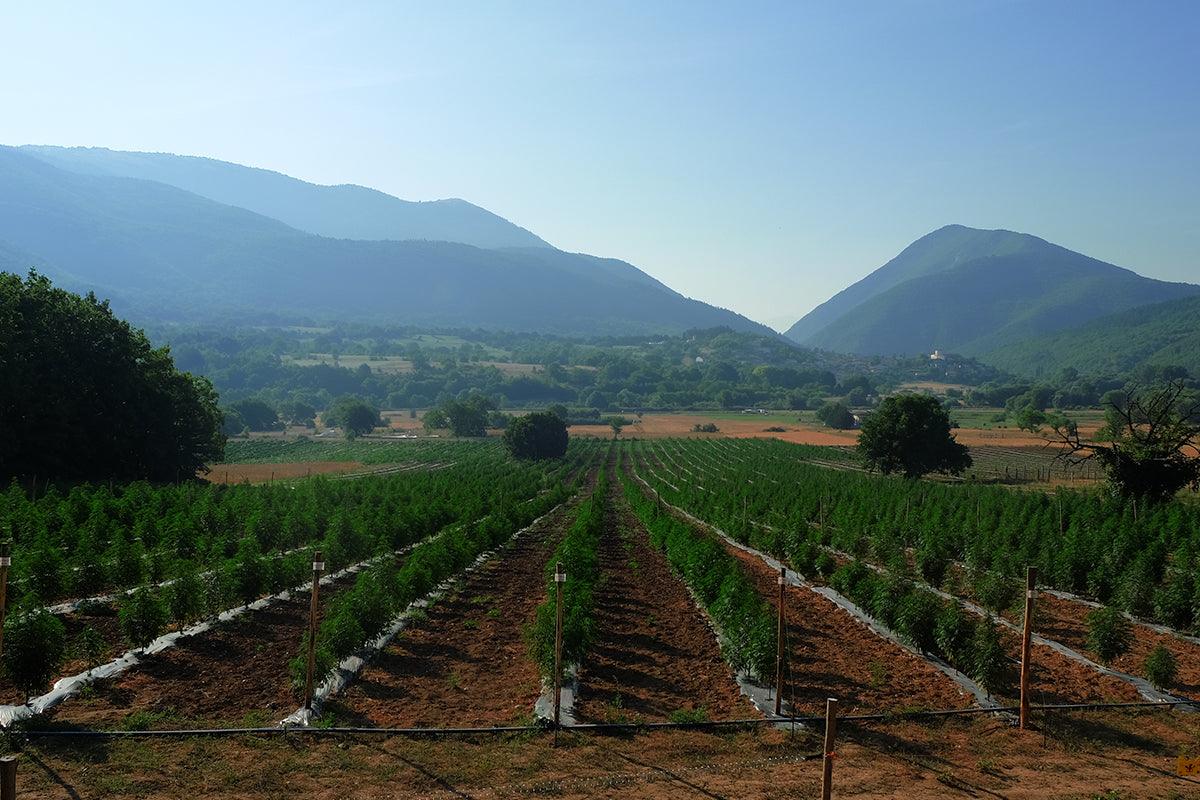The beneficial effects of cannabis are many and are now - in many respects - compared to those of some pharmacological treatments. The effects of cannabis are amplified by the interaction between the human organism and cannabinoids: the human body is equipped with a group of receptors, called the endocannabinoid system , which is activated as soon as it comes into contact with the active ingredients of cannabis. The relationship between THC and dopamine is very interesting.
- What is the endocannabinoid system?
- THC
- THC and dopamine: a lot of false beliefs
- Cannabis and PTSD
- Cannabis and energy
What is the endocannabinoid system?
The endocannabinoid system is made up of a group of receptors contained in the cells of the human body which, by interacting with the compounds present within cannabis plants, gives rise to the beneficial effects of cannabis on the organism.
These receptors are present throughout the human organism, with higher concentrations in some areas, and are normally activated by the so-called endocannabinoids , compounds similar to those of cannabis, naturally present within our body.
The molecules contained in Cannabis plants, called cannabinoids or phytocannabinoids , have a molecular structure very similar to that of the endocannabinoids produced by the human body and, therefore, activate the same receptors.
Both THC and CBD interact with these receptors to influence appetite, immune function, pain management, and many other factors.
THC
THC , or delta-9-tetrahydrocannabinol, is one of the active ingredients most present in the cannabis plant . It is a psychogenic substance produced by the flowers of the marijuana plant, which has many effects on the human organism and, if taken in the right doses and methods, can bring positive results.
THC alters the consciousness and mental state of those who take it ; the effect, however, strongly depends on the quantity and the psychophysical state of the person who consumes it : a minimal dose will lead to a short and not too intense state of euphoria associated with an expansion of emotional perceptions, while the intake of THC in high doses can have unpleasant effects on mood, which can result in depression or aggression.
The alterations, in a positive and negative sense on our organism, occur thanks to the presence of the CB1 and CB2 cannabinoid receptors , present in the endocannabinoid system of the human body. Our body, in fact, is capable of producing cannabinoids endogenously and THC, by binding to its receptors, stimulates the release of dopamine from some regions of our brain.
Dopamine is a neurotransmitter that acts on mood, sleep-wake alternation, attention, memory, voluntary movement and much more. The binding of THC to its receptors and the resulting production of dopamine stimulate feelings of pleasure, concentration, pain relief and appetite.
THC and dopamine: a lot of false beliefs
For more than forty years, scientists have linked the effect of the high - that is, the high caused by taking cannabis - to the interaction between THC and dopamine . Here's how the National Institute on Drug Abuse (NIDA) explains the high :
“THC, acting through cannabinoid receptors, also activates the brain's reward system, which includes regions that govern the response to healthy pleasurable behaviors such as sex and eating. Like most other substances of abuse, THC stimulates neurons in the reward system to release the signaling chemical dopamine at higher levels than typically observed in response to natural stimuli. This flood of dopamine contributes to the pleasure high that marijuana users seek.”
Today things have changed a bit. Studies in animal models supported the aforementioned theory, while numerous human studies suggest that at best, cannabis consumption produces only a modest amount of dopamine , as opposed to other stimulant substances such as cocaine and amphetamines.
In 2015, researchers at King's College London conducted a systematic review of all published studies – 25, to be exact – and said that in humans there is “no direct evidence to suggest that cannabis use affects Acute striatal dopamine release or influences chronic state of dopamine receptors in healthy volunteers” .
Cannabis and PTSD
The link between THC and dopamine is important for combating some psychological pathologies, first of all the so-called post-traumatic shock syndrome, also known by the acronym PTSD - Post traumatic stress disorder.
The key to managing PTSD lies in memory : those who have suffered a traumatic event often relive it through memories, images, perceptions and flashbacks.
A lower level of anandamide, an endocannabinoid linked to the management and production of dopamine, has been found in subjects suffering from PTSD. One of the central aspects of PTSD is therefore the deficient component of endocannabinoids.
Scientists have established that the CB-1 receptor signal, under normal conditions, deactivates traumatic memories and allows us to forget. Altered CB-1 receptor signaling, caused by endocannabinoid deficiency, is related to the consolidation of adverse memories, decreased fear extinction and anxiety.
THC appears to be a huge help in increasing anandamide levels in the body . However, it is believed that it is preferable to combine it with CBD which regulates its side effects, especially those linked to anxiety and paranoia.
Cannabis and energy
The production of dopamine linked to the intake of THC allows us to feel a sense of pleasure and satisfaction , which has a motivational effect on the brain, thanks to the sensitivity of the CB1 and CB2 cannabinoid receptors to the substance.
Dopamine is released when we do things that promote our survival, such as eating, learning new things, or having sex.
The release of dopamine makes us feel so good, it makes us do these things again and again .
The dopamine reward system is linked to learning and memory : when you experience a feeling of well-being, the brain associates the surrounding context and the information derived from it with the impending pleasure.
For example, when you smell food before eating , your brain begins to release dopamine in anticipation of when you will eat. The same happens following the intake of THC in moderate doses.
If the article was of interest to you, share it on social media with the rest of the Community, every single share helps us support our blog and keep you 360° informed on the world of Cannabis.
You might also be interested in:










